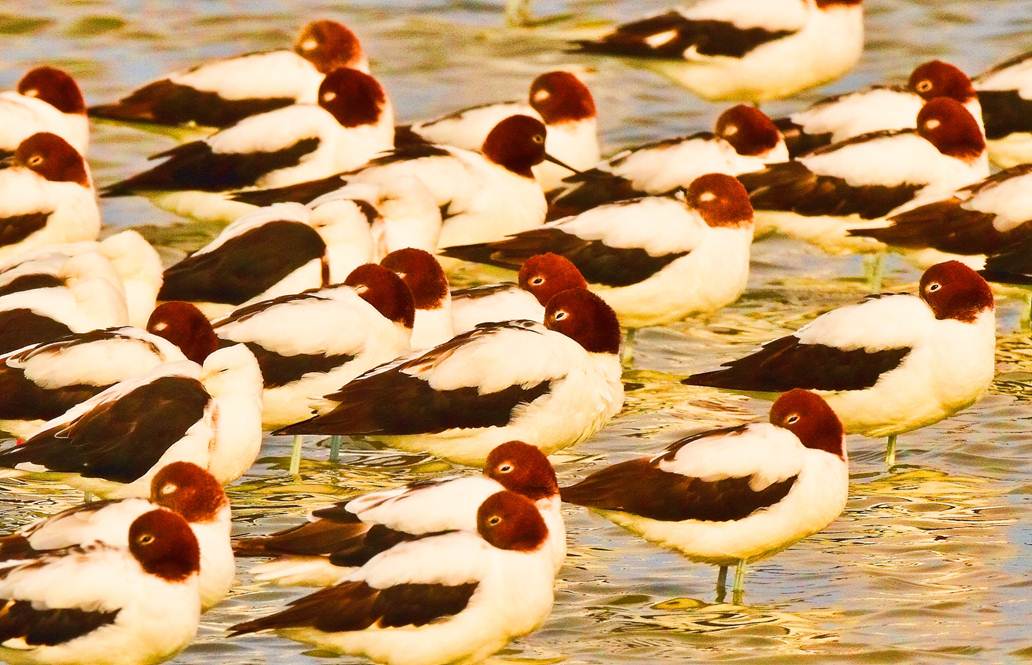Thanks for opening up a fascinating subject, Bill, but I must disagree.
The 'Naturalist's Colour Guide', first part published in 1974, was intended 'to give ornithologists and other naturalists an accurate and handily available tool to use in describing the colours of birds and other animals'. It was based on spectrophotometry analysis of actual plumages. Comparisons were made in the laboratory under precise specifications as to uniform lighting. It used a code written in terms of hue, value (light/dark) and chroma (saturation). Fine divisions on those aspects were expressed in decimals. Colour 240, which came out in Part III after a long discussion about the confused rufescence issue in Part II, has a code 3.6 YR 4.5/6.7. For practical purposes, this seems precise enough.
A selection of common colours was then published in the guide. Printing limitations would have been an issue, but great care was taken to keep the printed product as useful as possible. HANZAB was prepared using the guide against actual plumages in specified lighting, It gave 'dark 240' as the best match for the avocet head. The match might be, in a sense, 'approximate', but I think it can be taken as a scientifically sound assessment, and any degree of 'approximation' is negligible compared (my main point) to the enormous variation in apparent colour due to variable light in the field - or in photographs.
Now we come to the separate question of names for colours, which was what you raised in your first message. There will be no agreement on this, unless an agreed nomenclature (take the one in the guide if you wish) is used. 'Kingfisher Rufous' was just made up. The important thing is 'Colour 240', which is given by HANZAB for the avocet head. Now HANZAB itself did not adopt the Guide NAMES: 'these were used by Smithe only to convey a sense of familiarity'. 'One man's sepia is another man's fuscous, and so on ... Names of colours given in the text are simple (eg dark brown) so that readers unfamiliar with complex colour descriptions(eg burnt umber with a trace of cinnamon) will not be misled'. I would agree on that basis 'chestnut' is the most general of approximations, but not 'dark 240'.
Since publication of the Colour Guide the digitising of colours has introduced a whole new element. The radiant light (if that is the _expression_) from your monitor, and the possibility of variable colour setting, are as serious a source of distortion as the limitations of the printing process, but that is another matter. I couldn’t agree more about the wonderful effect we are getting at the moment with that early morning light. Here is my impression of ‘burnished avocets’ – using the ‘colour stretch’ button on one of my graphics programs.

.
To:
Subject: Colour on an avocet
From: Bill & Raelene <>
Date: Tue, 01 Jan 2013 17:25:12 +1100
Thank you for the colour codings Geoffrey. HANZAB's chestnut and 'dark 240' in the colour guide and 'Kingfisher Rufous' are approximations. Red- necked in the avocet does not mean the primary colour red but a variation that is somewhere in between a secondary(orange) and tertiary colour (brown). Rufous means reddish and there will be variations of rufous depending on light. The heads and necks of the Forde avocets, with the early morning sunlight glowed with that golden burnish. Though I saw them briefly, the impression was indelible.
Bill
-----Original Message-----
From: Bill & Raelene [
Sent: Tuesday, 1 January 2013 12:11 PM
To:
Subject: [canberrabirds] avocets at Forde Pond.
What shade would you call that striking colour on the head and neck? chestnut, sienna, umber, light red, milk chocolate?
Bill Graham
*******************************************************************************************************
This is the email announcement and discussion list of the Canberra Ornithologists Group.
Please ensure that emails posted to the list are less than 100 kB in size.
When subscribing or unsubscribing, please insert the word 'Subscribe' or 'Unsubscribe', as applicable, in the email's subject line.
List-Post: <m("canberrabirds.org.au","canberrabirds");">>
List-Help: <m("canberrabirds.org.au","canberrabirds-help");">>
List-Unsubscribe: <m("canberrabirds.org.au","canberrabirds-unsubscribe");">>
List-Subscribe: <m("canberrabirds.org.au","canberrabirds-subscribe");">>
List archive: <http://bioacoustics.cse.unsw.edu.au/archives/html/canberrabirds>
List manager: David McDonald, email <m("canberrabirds.org.au","canberrabirds-owner");">>

